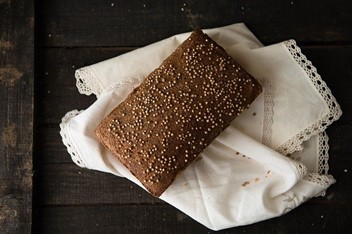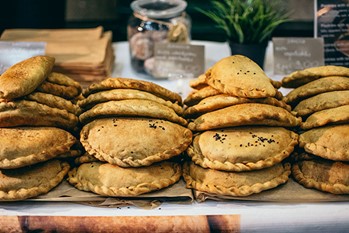Eat like a local in Tallinn
Traditional Estonian cuisine is strongly linked to the history of the Baltic State and influenced by Scandinavian, Russian and German cuisine. In Tallinn’s city centre you will find plenty of restaurants to eat like a local. Go on a food tour and discover Estonia’s delicious local food culture and enjoy them alongside a large glass of buttermilk or kefir.
Mulgipuder
This dish is unique to Estonian cuisine and some even consider it to be the national dish of the country. Mulgipuder is a rustic Estonian porridge made of mashed potatoes and barley and a true comfort food.
Mulgipuder is not only very nourishing, its simplicity also makes it very versatile. It can be eaten as a main dish along with a dollop of sour cream, rye bread and pickles or as a side dish complementing meat dishes. Lately, it has also become a staple in vegan restaurants.
Rye bread

Rye bread is quintessential in Estonian food culture and comes in uncountable variations, with seeds, nuts and fruits being popular additions. While the basic ingredients are simple and only consist of flour, water, yeast, sugar and salt, rye bread is also an ode to slow cooking, since baking one loaf takes no less than 12 hours.
Estonia is famous for exporting rye for more than 1000 years and has mastered the art of baking rye bread ever since, also known as black bread or leib. It is served with most Estonian dishes and best eaten when it is still warm. Rye bread can be found in almost every restaurant.
Vastlakukkel (Semla)
Vastlakukkel are dreamy buns, filled with a sweet almond paste, lots of whipped cream and traditionally served on Shrove Tuesday or Vastlapäev. The first version of this dish consisted of a plain bread bun dipped in a bowl of warm milk but it developed into a sugary, sweet treat over the centuries.
Once only available in February for this special festivity and usually eaten after a round of sledding down the snow-covered hills, nowadays most bakeries offer them between Christmas and Easter or even all year round.
Sprat Sandwich
Fish is an important ingredient in Estonian food and strongly linked to the long fishing culture of the country. Sprat is one of the most common fishes in the Baltic Sea, hence a lot of Estonian dishes are made with sprats. Kiluvõileib is the love child of marinated sprat fillet and rye bread, completed by a creamy sauce or butter, fresh herbs and poached or boiled eggs.

Pirukad
Pirukad are special Estonian pastries, similar to dumplings but the Baltic way! They come in a lot of varieties: made with either sweet bread dough or pastry dough, they can be filled with everything the Estonian cuisine has to offer, from veggies like carrots and cabbage to stewed beef and ham. They also vary in size and can be fried or baked, so the options to enjoy Pirukad are endless.
Kohuke
Estonian cheese is quite popular in the Baltic state, especially curd cheese. This sweet snack is made from sweet curd cheese and glazed with chocolate, sometimes complimented by fruits, nuts or caramel as well. The sweet bars can be found in various flavours and are readily available in any supermarket.
Kohuke is popular throughout Eastern European and Baltic countries. While its history doesn’t date back that long and it was just created during the Soviet regime, it is a well beloved chocolaty snack rich in protein.
